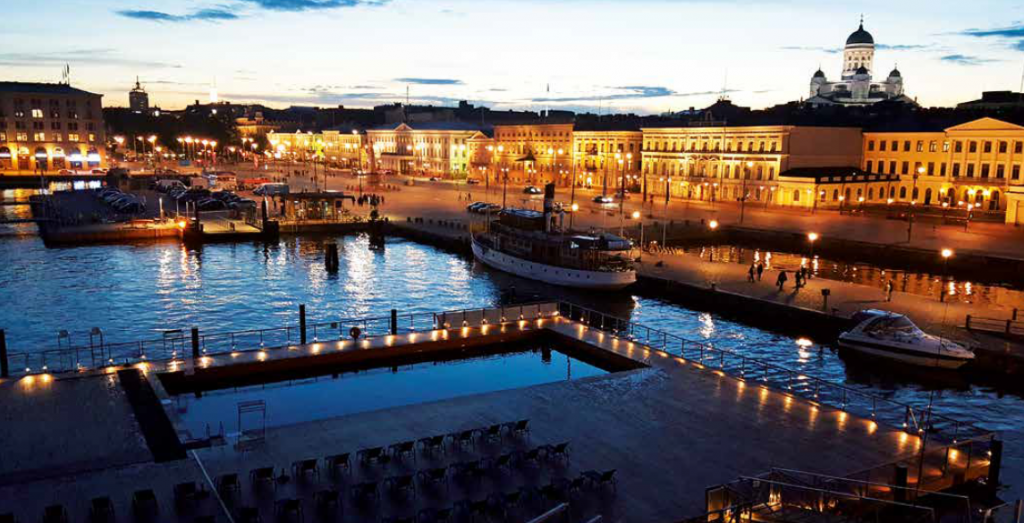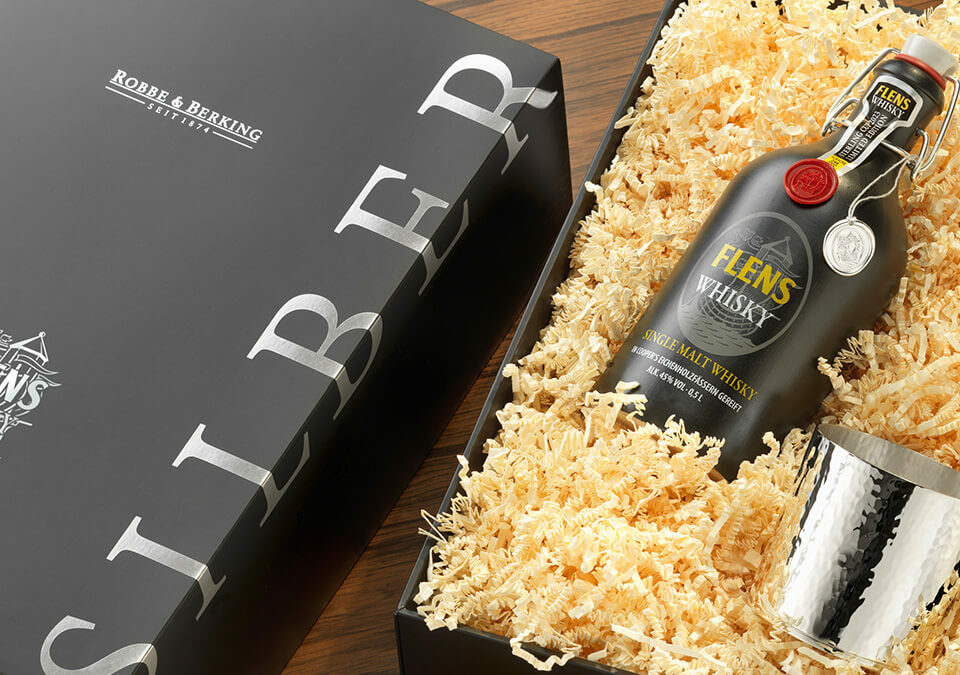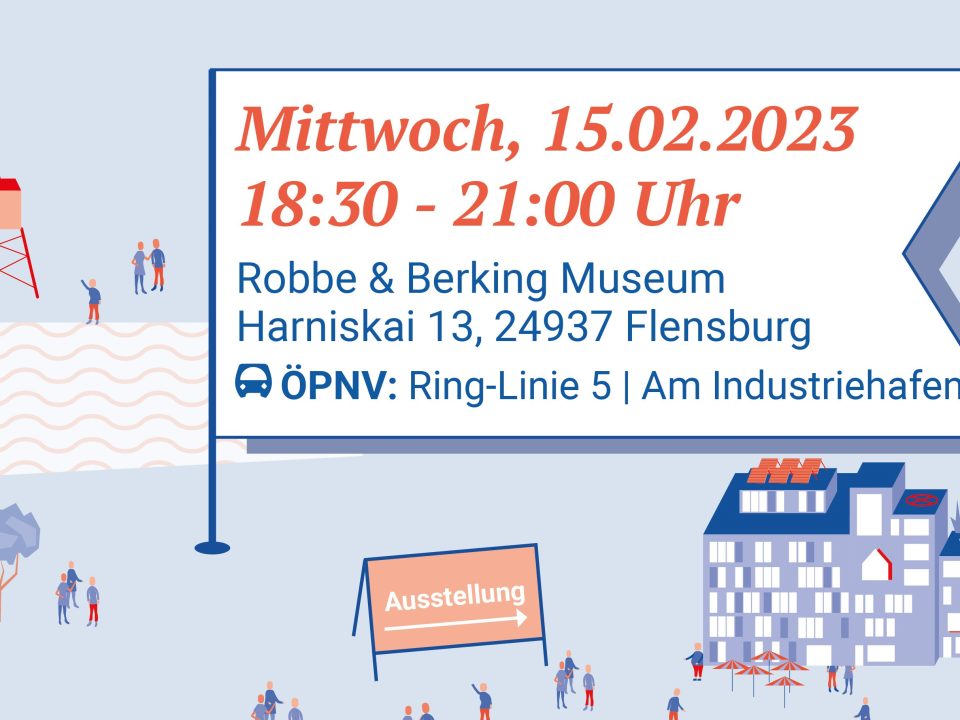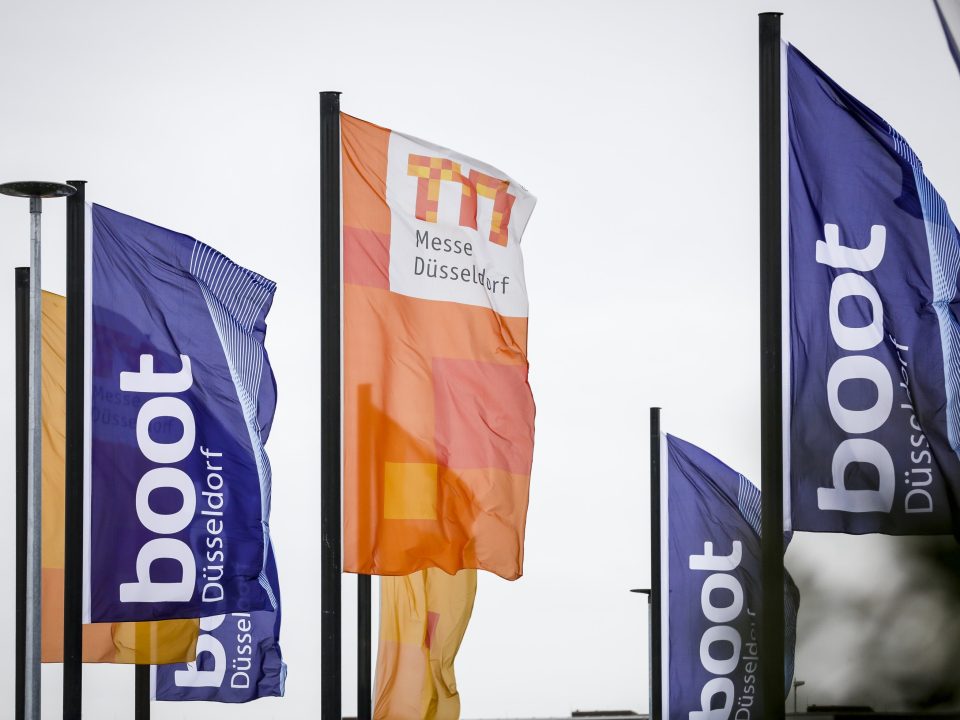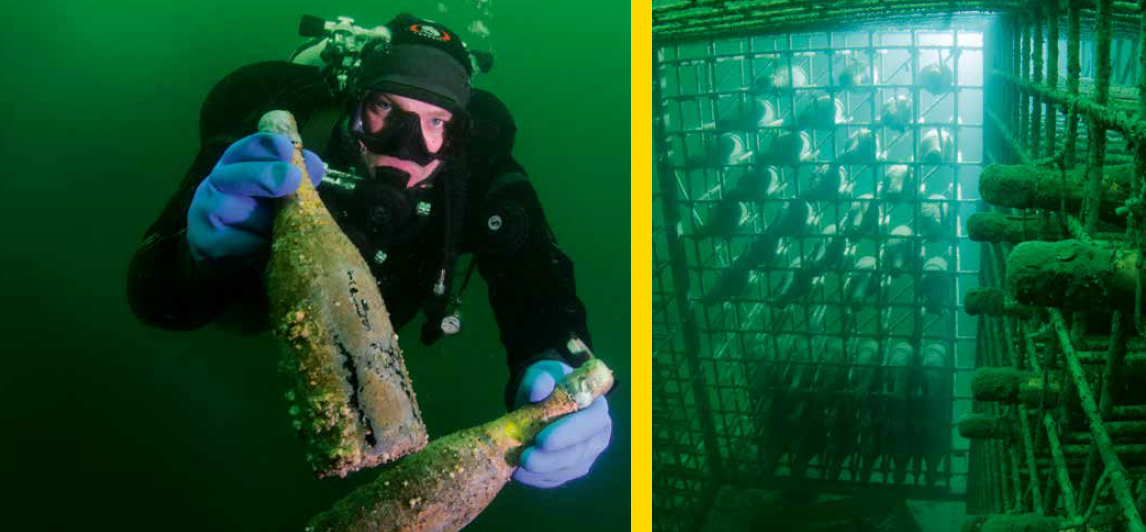
On the autonomous island of Åland, in the middle of the baltic region between Sweden and the Finnish mainland, champagne corks pop every two years. the reason for this is a unique find on the seabed.
Christian Ekström slowly emerges from a depth of 50 metres with a white bottle in his hand. In the depths there is a cash of 167 more bottles of unknown content. Actually, the Åland-Swedish dive team only wanted to dive on a shipwreck: a two-masted schooner that had sunk south of Föglö in the outer archipelago of Åland in the first half of the 19th century. Nobody could have dreamed of finding a treasure in the almost intact sailing ship. When Christian Ekström does not pursue his love of diving, he devotes himself to his second passion, beer. For many years he has successfully and enthusiastically run the pub of the Åland microbrewery Stallhagen in Godby, where beer is still brewed according to an old craft tradition. But as often as possible, the blond-haired Ålander goes out on the Baltic Sea with a diving crew. In the dark depths of the Baltic waters, they regularly look for sunken ships from days gone by. Here, the crew was lucky, when the sonar showed a sailing ship at 50 metres depth. It seemed to be standing more or less upright on its keel, the two masts towering unbroken – a rare find, the divers thought expectantly.
The visibility on the seabed was a maximum of two metres. »Only with the help of powerful lamps were we able to search the hull,« says Ekström. Except for a broken-off stern plank, the 21.5 metres long and 6.5 metres wide wooden hull proved to be almost intact. Even a brick stove with pots was clearly visible. In addition, they found several octants, clay jugs and porcelain dishes, which could be partially attributed to the Swedish porcelain manufacturer Rörstrand who had been active since 1726. »Just before we were about to end the dive, I wanted to take one last look at the tiller,« says Ekström. »And that is when I discovered them.« Several intact glass bottles, covered with a musty, organic film that had formed over the decades. He took one of them to the surface. The day began quite normally for Åland-born oenologist Ella Grüssner Cromwell-Morgan. In addition to her work as a sommelier and oenology lecturer at the University’s School of Applied Sciences, she runs a small hotel in Saltvik with her husband Martin Cromwell-Morgan. »I was actually busy with our guests and suddenly I was sitting in my garden with Christian Ekström and an ancient bottle from the sea.« Even now, she gets goose bumps when she thinks back to this day. »At first, we did not know what we were dealing with, but the typical bottle shape and the corks pointed to champagne,« she explains. The contents were very sweet, tasted more like a cider matured in an oak barrel – a full-bodied bouquet of ripe fruit with a hint of tobacco. »And although it was so incredibly old, it tasted surprisingly fresh,« says Ella Grüssner Cromwell-Morgan. In retrospect, she is glad that she was the first to try the liquid gold from the sea. With a bottle of Perrier Jouët from the year 1825, the approximately 170-year-old Åland champagne is one of the oldest drinkable and thus also the most exclusive champagnes in the world.
»To discover a world record breaking champagne here, in the middle of nowhere, is almost ironic«, she says with a laugh. Åland has less than 30,000 inhabitants, around 11,500 in its capital, Mariehamn, alone (which translates to Marienhafen in German, attributed to the German Princess Marie of Hesse-Darmstadt, wife of the Russian Tsar Alexander II), making it one of the smallest capitals in Europe. But the Baltic island is also as special as the champagne find is: a small piece of Sweden in Finland, if you will.
Until the beginning of the 19th century, the archipelago consisting of more than 6,757 islands belonged to the Swedish Empire. After the Swedish-Russian war Sweden had to cede Finland and Åland to Russia in 1809. As a result, the archipelago fell to the newly founded Grand Duchy of Finland, which in turn was subject to the tsarist Russia. It was not until Finland’s declaration of independence in 1917 that the affiliation of Åland was again discussed. On June 24, 1921, a compromise was reached: Swedish-speaking Åland became a self-governing zone under Finnish rule. Since then, the Ålanders have largely been able to regulate their own affairs, which has led over the years to their own flag, their own national anthem, their own national holiday, their own license plates, their own stamps and their own internet domain. The icing on the cake of Åland’s independence is that Finnish is not a compulsory school subject.
That a 170-year-old sunken champagne can be in such excellent condition is thanks to the optimal storage conditions under water: the low salinity of the Baltic Sea, the horizontal position of the shipwreck, darkness, a constant temperature of four degrees Celsius and similar pressure conditions inside and outside the bottles. With five bar, the pressure at 50 metres depth approximately corresponds to the pressure inside the champagne bottles. »The most important thing, however, is the low and constant temperature at the bottom of the sea,« explains renowned champagne expert Richard Juhlin from Sweden. As a result, the champagne matures significantly slower and develops much more succinct, fuller notes – provided it does not get any salt water inside the bottles. Although the original corks were still in good condition, all bottles had to be recorked after salvage. Before that could happen, Richard Juhlin had the privilege and the important task of tasting each and every bottle to determine the taste and quality of the antique drinks. »About two-thirds were inedible, the other bottles, however, tasted fantastic,« he enthuses. Samples tested in the laboratory showed that the sugar content of antique champagne at around 140 grams per litre is many times higher than today’s average of about 10 grams per litre. The sweetness of the champagne was typical of the wine production of the early 19th century, since sparkling wine was then mainly enjoyed as dessert wine.
Based on the coats of arms and lettering burned on the cork, determining the origin of the champagne was child’s play: the underwater find included bottles from the houses Veuve Clicquot Ponsardin, Juglar (until 1829, then Jacquesson) and Heidsieck – all of which are still known today. 47 of the 168 bottles turned out to be Veuve Clicquot products from 1839–1841. Fabienne Moreau, the in-house historian of Veuve Clicquot, even assumes they come from a production personally commissioned by Madame Barbe-Nicole Clicquot Ponsardin: »The oldest bottles in our possession date back to 1905, long after the death of Madame Clicquot.« In view of this fact, the world record price of 30,000 euros is not surprising. This is what a couple from Singapore paid for a bottle of Veuve Clicquot from the undersea find at the first champagne auction in Mariehamn in 2011. A bottle of Juglar was sold for 24,000 euros. According to the authorities, the proceeds are to be used for marine archaeological investigations and environmental projects in the Baltic Sea.
But not only the condition of the Baltic Sea is a concern the Ålanders hold close to their hearts, since 2014 the quality of champagne is also on the program. Together with Veuve Clicquot and the University of Reims in France, the Holmberg family, which owns the conference and hotel island of Silverskär near Saltvik, has launched a special research project: for three years, several crates of new champagne have been stored on the Baltic seabed close to the so-called Champagne Island. »We want to harness the ingenuity and power of nature and test how underwater storage affects the aging process of the champagne,« explains Johan Mörn, one of the managers of Silverskär. At the same time, Champagne from the same vintage matures in the traditional storage facilities in the French town of Reims. The project is organised to last 40 years, with bottles from both locations being opened, sampled and compared every two years. One of the happy testers is Ella Grüssner Cromwell-Morgan: »I’m looking forward to the next tasting and I’m curious if in a couple of years you’ll taste the difference between the underwater and the normally stored Veuve Clicquot.« Whether the underwater storage will prevail, will prove itself in the coming decades. »For champagne that should not reach its prime thirty or forty years later, the previous storage on land was perfect,« assesses the expert Richard Juhlin. The underwater storage is not always suitable because it slows down the maturation process. Nevertheless, he can imagine that one or the other private person with sufficient means will set up an underwater cellar – at least those with private access to the sea.
//
Text: Anna Karolina Stock. Photos: Fullwave. This article appeared in GOOSE No. 27

